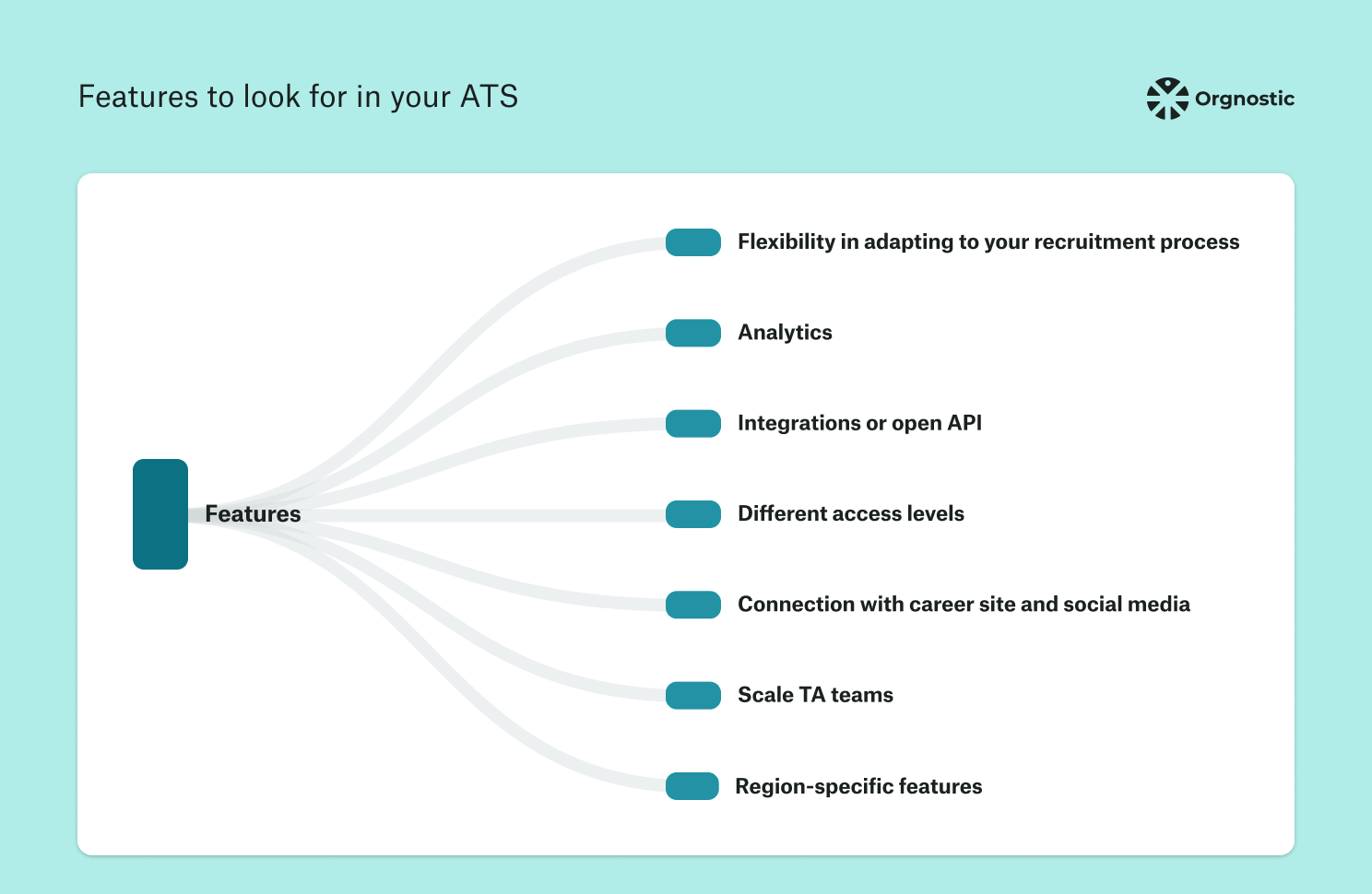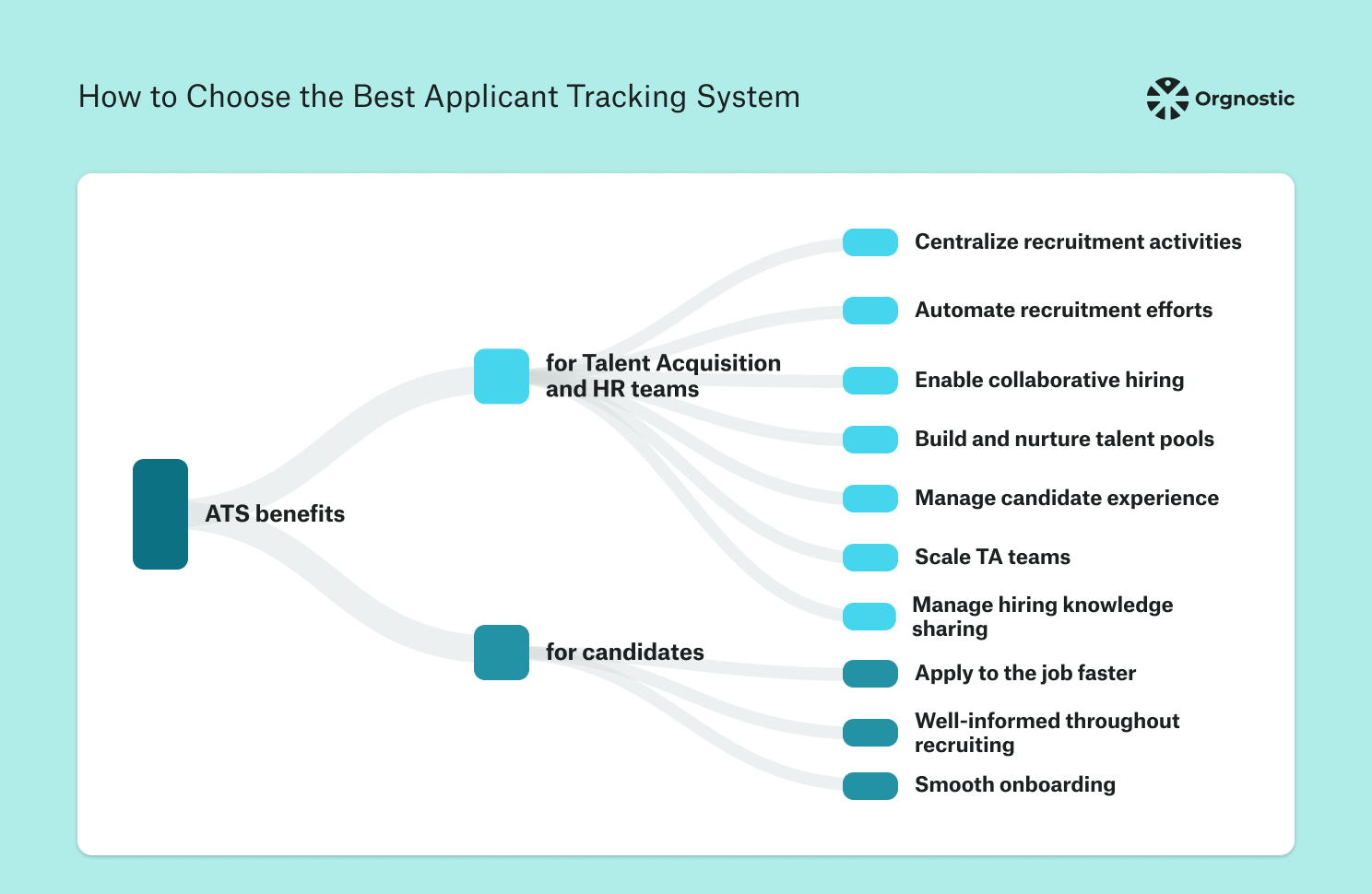A good ATS improves hiring efficiency, but each company has its nuances. Here’s what to look for when choosing your applicant tracking system.
Organizations today sometimes double or triple their headcount growth within a single year. To support such a large undertaking, it’s essential to have not just effective recruitment processes and talent acquisition teams, but also the right tools, including an applicant tracking system (ATS).
A good ATS lets teams manage headcount growth efficiently, improving candidate experience and nurturing relationships with a wider talent pool. But as each company has unique hiring processes and needs, there’s no one-size-fits-all solution.
In this post, we guide you through the criteria to consider so that you choose the best applicant tracking system for your organization.
This article is part of our series on creating an optimal HR tech stack. It will be part of our “People Ops Guide for CHROs” e-book that’s in preparation. Sign up to be the first to find out once the guide is out.
Internal criteria to consider when choosing your ATS
You need an ATS regardless of the hiring plan you have. However, the speed of your organization’s growth can influence what type of ATS you need.
Think about the following to help you prepare for talking to different ATS vendors:
- Growth plan
- Number of users
- Company size
- Budget
How to choose the best ATS? Look for these 6 must-have features

1. Flexibility in adapting to your recruitment process
The Applicant Tracking System that you’re implementing should be flexible enough to support your company’s current recruitment process.
Depending on what your organization finds important in the recruitment process, you should be able to customize recruitment stages, publish job ads on relevant job boards, or keep the candidates in different talent pools.
This doesn’t mean that you have to stick to your current process if you believe there’s room for improvement. The best way to think about it is to ask yourself how does the ATS you’re considering make your job easier, and how does it add value to your current recruitment process?
2. Analytics
Obviously, being a people analytics platform, we care about data. But we are not alone in that one! Strategic and data-driven decision making is crucial to HR and Talent Acquisition teams.
Depending on the size of your organization, you will need different levels of granulation when it comes to data and analytics. Moreover, with tools such as Orgnostic, you don’t necessarily need attractive-looking reports within your ATS: you can automate them and spend your time elsewhere.
However, you do need to pay attention to the analytics you can extract from your ATS and build customized reports to optimize your recruitment process or deliver them to your superiors.
Here are some analytics that you could get a report on with your Applicant Tracking System:
- Time spent in different recruitment stages
- Best candidate sources
- Time-to-hire
- The most cost-effective hiring sources.
3. Integrations or open API
Related to the previous point, one of the most important aspects of an Applicant Tracking Systems is its possibility to integrate with other tools.
Why is this important? The reason is twofold.
First of all, you want your ATS to integrate with other HR tech you have — like HRIS and other tools. That way, your recruitment is more streamlined and you have more data on your disposal. You will be able to use predictive HR metrics such as who’s at risk of leaving, or track your remote employees’ experience.
Second, most Applicant Tracking Systems have multiple modules — for example, sourcing, recruitment marketing, talent pools, etc. Not all of them will be equally developed and tailored to your company’s needs. You want to have the opportunity to use best of breed solutions for every aspect of the recruitment process. Therefore, look for native integrations and/or open APIs.
4. Different access levels
As a recruiter or a Talent Acquisition Specialist, you will be using ATS on a daily basis. However, the recruitment process should include more people.
You don’t need all of those people — your current employees included in the candidate selection process — to have the same level of access to the system as you. They probably don’t even want it. They want their involvement to be simple, and they don’t want to waste time learning how to navigate your ATS. It’s useful to avoid the possibility of human error, so it’s best to keep the highest level access to a minimal amount of people in the team.
When choosing your ATS, ask yourself: How do non-HR users interact with this ATS? If this interaction is simple and user-friendly, this particular criteria will be satisfied.
5. Connection with career site and social media
When an Applicant Tracking System is connected with your career site and social media, you get accurate data on the application source. Also, posting jobs gets a lot easier and faster.
We would say that integration with your career site (or the possibility to build one within the ATS modules) is a very important feature to look for. You should also see if you can easily post your job openings on relevant social media and job boards.
6. Region-specific features
In most of Europe, GDPR compliance is a must-have for any tools that deal with people’s information. For example, a GDPR compliant ATS will let you know when the data storage period you’ve set has ended. You can automate sending a request for further use of candidates’ personal data and stay compliant with data privacy regulations.
In the US, there are several diversity laws like The Civil Rights Act and its Title VII, or Age Discrimination in Employment Act. These laws prohibit employers from discriminating based on race, sex, religion, color, age, or other when hiring individuals. Therefore, features to accommodate diversity hiring should be enabled in your preferred ATS if these laws concern your organization.
ATS makes an integral part of every organizations’ tech stack, similar to HRIS. That’s why it’s important to have these two systems connected and exchanging data. Find out how to choose the best HRIS for your organization.
Why should you get an Applicant Tracking System?
Organizations invest in Applicant Tracking Systems for the same reasons they invest in other tools: to help them become more efficient and thus save resources.
However, not everyone sees it that way. Sometimes, HRs struggle to get buy-in from the leaders in their company.
That’s why we’ve split this section into three areas: benefits of ATS for HR teams, candidates, and businesses as a whole.

Benefits for the Talent Acquisition and HR team
Streamlined recruitment process
The biggest difference in using ATS systems can be seen when HR teams are switching from manual recruitment processes. Centralizing all recruitment-related activities in one place makes recruitment more streamlined and efficient.
Research shows that a smart Applicant Tracking System reduces the HR employee’s workload by at least 30%.
Recruitment automation
Excel tables and email communication are hard to track and require a lot of manual work. Furthermore, they rarely enable TA Specialists or recruiters to apply recruitment best practices. With an Applicant Tracking System, it’s possible to automate certain manual tasks — for example, sending a rejection letter to candidates that didn’t make it to another round.
Enabling collaborative hiring
Applicant Tracking Systems are a great way to collaborate with multiple people during the selection process. With different levels of access to the ATS system, different key personas — like the future hire’s manager or colleague — can easily participate in interviews, leave comments, schedule meetings, and more.
Talent pools
As you know, building and nurturing talent pools is crucial for any organization. Keeping the updated database of candidates can help you save a lot of time and money the next time you’re hiring!
Moreover, engaging the candidates in different talent pools can make a world of difference when the right job opening appears.
Candidate experience management
Candidate experience is something that recruiters have to pay attention to. In a candidate-driven job market, it’s crucial to provide the best candidate experience to successfully build talent pools and optimize your employer branding efforts.
TA team scalability
With an ATS system in place, organizations can easily scale TA teams by just adding another user. This allows fast-growing companies to hire more people in shorter periods of time.
Keeping the know-how
Without an ATS, you are at risk of losing internal recruitment knowledge if a person in charge leaves the company. On the other hand, the ATS system keeps all the relevant recruitment data in one place and allows for an easy knowledge transfer.
ATS benefits for business leaders and organizations as a whole
Improved HR team efficiency
With all the benefits listed above, it’s easy to see how HR and Talent Acquisition teams are more productive when using an Applicant Tracking System. It’s simple as that: an organization will need less manpower to achieve the desired outcome by streamlining and automating the recruitment process.
Saving time and money are the obvious benefits that a company can experience when an ATS is implemented. ROI of an ATS can be easily calculated through improved TA teams’ efficiency, reduced external costs of hiring, avoiding bad hires, and decreasing time-to-fill.
Making data-driven decisions
Applicant Tracking Systems allow HR teams to extract valuable data and make data-driven decisions.
For example, HRs can track application sources with an ATS and come to the conclusion that none of the candidates that made it to the final selection applied via a certain job board. Since that job board is costly, HRs could propose to stop using it and invest in a more fruitful source of job applications. Once again, this leads to organizations saving valuable resources and achieving better results.
ATS benefits for the candidates
Applying to the job faster
Applicant Tracking Systems usually entail CV parsing tools that eliminate the need to manually enter the information about skills or requirements needed for the job. Instead, the CV parser recognizes this information from the CV and shortens the time to apply.
Moreover, filling out a simple form and answering a couple of questions is easier and more user-friendly than writing a complex cover letter!
Staying informed throughout the recruitment process
As mentioned above, candidate experience is something that recruiters need to pay attention to nowadays. Did you know that 80% of job candidates wouldn’t reapply to a company that failed to notify them of their application status?
In a lot of industries, organizations simply cannot afford themselves the luxury to avoid notifying candidates of their application status on time. Luckily, Applicant Tracking Systems help recruiters automate this important aspect of candidate experience.
Streamlined hiring and onboarding
A lot of ATS systems can be integrated with eSignature and onboarding tools that make the candidates’ entrance to the company effortless. Thus, a positive candidate experience can turn into a great onboarding experience, consequently affecting employee retention, engagement, and more.
Applicant Tracking System: value-driver beyond recruiting
Applicant Tracking System brings immense value to your company and recruitment team. Getting a buy-in for a new ATS from your leadership should be easy when presented with many benefits and an ROI it could bring.
Implementing the right ATS is a way towards improved candidate experience and optimized employer branding.
By looking for the six essential features we laid out, you’ll be covering the essential needs of your TA team while applying recruitment best practices.
Big thanks to Emir Terzo for sharing his experience and insights that helped us write this article 🙌